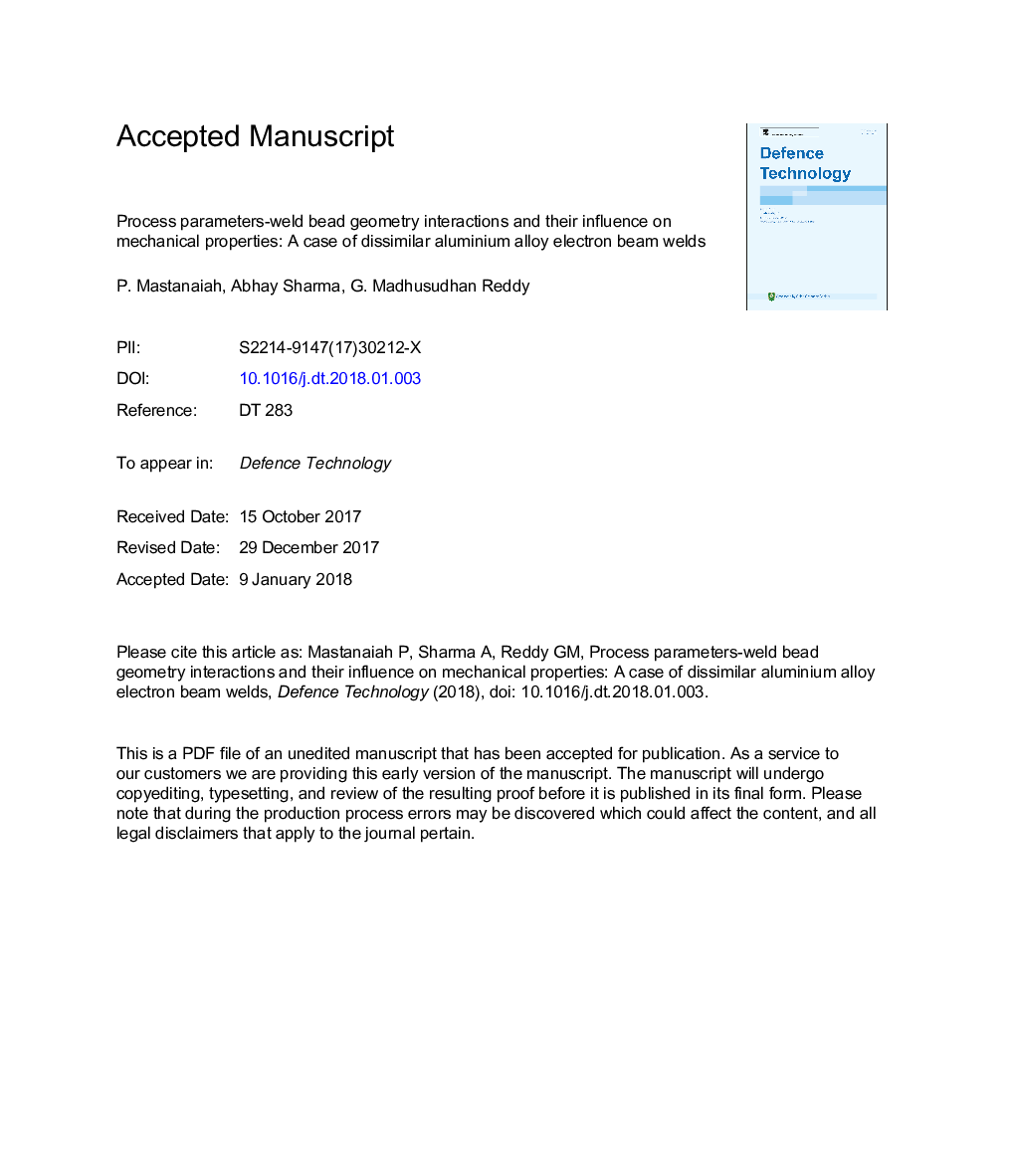| Article ID | Journal | Published Year | Pages | File Type |
|---|---|---|---|---|
| 7157619 | Defence Technology | 2018 | 50 Pages |
Abstract
Prediction of weld bead geometry is always an interesting and challenging research topic as it involves understanding of complex multi input and multi output system. The weld bead geometry has a profound impact on the load bearing capability of a weld joint, which in-turn decides the performance in real time service conditions. The present study introduces a novel approach of detecting a relationship between weld bead geometry and mechanical properties (e.g. tensile load) for the purpose of catering the best the process could offer. The significance of the proposed approach is demonstrated by a case of dissimilar aluminium alloy (AA2219 and AA5083) electron beam welds. A mathematical model of tensile braking load as a function of geometrical attributes of weld bead geometry is presented. The results of investigation suggests the effective thickness of weld - a geometric parameter of weld bead has the most significant influence on tensile breaking load of dissimilar weld joint. The observations on bead geometry and the mechanical properties (microhardness, ultimate tensile load and face bend angle) are correlated with detailed metallurgical analysis. The fusion zone of dissimilar electron beam weld has finer grain size with a moderate evaporation and segregation of alloying elements magnesium and copper respectively. The mechanical properties of weld joint are controlled by optimum bead geometry and HAZ softening in weaker AA5083 Al alloy.
Related Topics
Physical Sciences and Engineering
Engineering
Control and Systems Engineering
Authors
P. Mastanaiah, Abhay Sharma, G. Madhusudhan Reddy,
